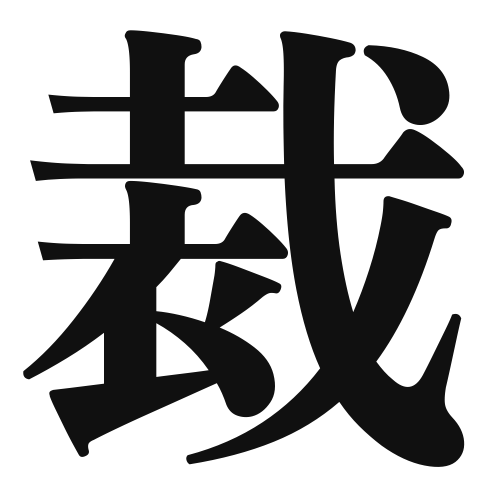1. Overview of Meaning
The kanji “裁” (sai) primarily means “to judge,” “to cut,” or “to tailor.” It is often associated with the act of making decisions or adjustments, particularly in contexts like law and fashion.
2. Formation and Radicals
Formation of the Kanji: The kanji “裁” is a compound character that combines elements representing “to cut” and “to judge.” It reflects the idea of making precise decisions or alterations.
Radical: The radical for “裁” is “衣” (clothing), which indicates its connection to tailoring and fashion.
3. Examples of Usage
Common Words and Phrases:
- 裁判 (saiban) – trial, judgment
- 裁縫 (saihou) – sewing, tailoring
Example Sentences in Daily Conversation:
- 彼は裁判で証言することになった。 (Kare wa saiban de shogen suru koto ni natta.) – He is going to testify in court.
- 彼女は裁縫が得意です。 (Kanojo wa saihou ga tokui desu.) – She is good at sewing.
4. Synonyms and Antonyms
Similar Kanji:
- 判 (han) – to judge, which emphasizes the decision-making aspect.
- 切 (setsu) – to cut, which focuses more on the physical act of cutting.
Antonyms:
- 合 (gou) – to fit or match, which implies harmony rather than division or judgment.
5. Cultural and Historical Background
Connection to Japanese Culture: The kanji “裁” is often used in legal contexts, reflecting Japan’s structured approach to law and order. It also appears in the context of traditional crafts, such as tailoring.
Proverbs and Idioms:
- 裁判は公正でなければならない。 (Saiban wa kousei de nakereba naranai.) – Trials must be fair.
